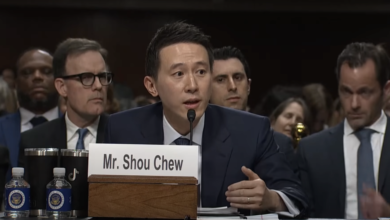Over the past months, the bourgeois press has been giving some attention to the most glaring of war crimes committed by the U.S. military in Iraq.
 Marines search Haditha home, March 2, 2005. Photo: Jaime Razuri/AFP/Getty Images |
The ones that have been uncovered are awful enough. First, there was the torture and killing of prisoners at Abu Ghraib. Then, in November 2005, U.S. marines massacred 24 civilians—mostly women and children—in Haditha.
Now the world knows about the terrible March 2006 rape and murder of Abeer Qassim al-Janabi, a 14-year-old Iraqi girl. U.S. soldiers murdered her and then killed her mother, father and five-year-old sister. A U.S. military investigator has recommended that four of the five implicated U.S. soldiers be court-martialed.
These atrocities have provoked an outcry across the world. They have contributed to the growing disgust felt by a majority of U.S. working people for the war and its consequences.
Faced with this growing outrage, the Pentagon has been forced on the defensive. For example, on Sept. 3, an Army investigator recommended the death penalty in the case of four soldiers who killed three Iraqi civilians in a May 3 incident near Samarra—if the court-martialed soldiers are found guilty. That is a big “if.”
These incidents are always reported by the big business press as “isolated incidents.” The public is assured that guilty soldiers will be punished.
A look at history points to a completely different reality. Massacres, killings, torture and humiliation at the hands of the occupying imperialist army is the norm. Perpetrators of the most heinous crimes almost always walk free.
‘Recurrent attacks on ordinary Vietnamese’
An Aug. 6 Los Angeles Times article, “Vietnam Horrors: Darker Yet,” details widespread atrocities committed by the U.S. military against the people of Vietnam, Laos and Cambodia during the 1960s and 1970s.
 Hundreds of Vietnamese civilians were killed in 1968 My Lai massacre. |
The article is based on a review of 9,000 pages in a once-secret government archive containing investigative files, sworn statements by witnesses to the crimes and status reports for top military brass. They were compiled by a Pentagon task force—dubbed the “Vietnam War Crimes Working Group”—in the early 1970s. These documents were all declassified in 1994 but went largely unnoticed for over 10 years.
The report reveals that Army investigators looked into and substantiated 320 war crimes committed by the U.S. military in the late 1960s and early 1970s. It did not include the notorious 1968 My Lai massacre, where over 500 Vietnamese civilians were massacred and tortured by marauding U.S. troops.
The Times reports that the “records describe recurrent attacks on ordinary Vietnamese—families in their homes, farmers in rice paddies, teenagers out fishing.” Hundreds of soldiers, in interviews with investigators and letters to commanders, described violent troops who “murdered, raped and tortured with impunity.”
“Abuses were not confined to a few rogue units,” the article states. “They were uncovered in every Army division that operated in Vietnam.”
Among the cases in the archive were seven massacres from 1967 through 1971 in which at least 137 civilians were murdered by U.S. soldiers; 78 other attacks on civilians in which at least 57 people were killed, 56 wounded and 15 sexually assaulted; and 141 instances in which U.S. troops tortured civilian detainees or Vietnamese soldiers with fists, sticks, bats, water or electric shock.
For example, on March 16, 1968—the same day as the My Lai massacre—soldiers from the same division killed 80 to 90 civilians. Platoon leader Lt. Thomas K. Wilingham was charged with murder, but the charges were later dropped. No other suspects were pursued.
On May 18, 1971, a U.S. helicopter “hunter-killer” team attacked a village in Cambodia with rockets and machine guns, killing eight civilians and wounding many more. The team then left the wounded without treatment and ransacked the village, stealing the victims’ personal property.
On Feb. 8, 1968, after rounding up 19 civilians in a Quang Nam province village, Army soldiers in the 4th Infantry Division were ordered by their commander to “kill anything that moves.” The soldiers complied. It was just days after the Tet Offensive was launched by the Vietnamese resistance.
According to eyewitness Jamie Henry, who was then a 20-year-old U.S. Army medic, the soldiers pulled a naked teenage woman from a hut and threw her to the ground on top of a pile of huddled Vietnamese civilians. The U.S. troops then opened fire with machine-guns, killing everyone.
Henry reported the incident once he returned to the United States, although Army legal officers told him to keep quiet. He held a press conference in 1970 denouncing the war and the massacre and joined Vietnam Veterans Against the War.
No one was ever charged in the Feb. 8, 1968, massacre.
Thousands more unreported
In addition to the 320 cases “substantiated” by army investigators, hundreds of reported atrocities were left uninvestigated. The archive contains material related to more than 500 war crimes that were discounted by the U.S. military. Other war crimes that took place are not mentioned in the archive at all.
Of those that are mentioned but not investigated, one anonymous sergeant wrote a letter to Westmoreland in 1970 describing the mass killing of civilians by members of the Army’s 9th Infantry Division in the Mekong Delta. The letter blamed the killings, in part, on pressure from superior officers to generate high body counts.
The letter reads: “A battalion [sic] would kill maybe 15 to 20 [civilians] a day. With four battalions in the brigade that would be maybe 40 to 50 a day or 1,200 to 1,500 a month, easy. If I am only 10 percent right, and believe me it’s lots more, then I am trying to tell you about 120-150 murders, or a My Lay [sic] each month for over a year.”
The U.S. Army never acted on the letter, although internally they determined that it was “sincere” and “forceful.” The military brass only wanted to make sure that the push for verifiable body counts did not “encourage the human tendency to inflate the count by violating established rules of engagement.”
They also wanted to find the letter’s author to prevent his complaints from reaching politicians or the public.
Killing with impunity
Besides showing the widespread nature of atrocities committed by U.S. troops, the archives also point to how these atrocities were treated by U.S. military “justice.”
Despite the relatively small scope of the investigations in the archive, the records show that investigators determined that evidence against 203 soldiers accused of war crimes was strong enough to warrant formal charges.
But very little happened. Only 57 of the 203 ultimately were court-martialed and just 23 convicted. Fourteen of those convicted got prison sentences ranging from six months to 20 years, but nearly all sentences were reduced drastically on appeal.
The longest amount of time served was seven months, given to a military intelligence interrogator convicted of “committing indecent acts on a 13-year-old girl in an interrogation hut in 1967,” the Times report concluded.
Most of the war criminals just received a letter of reprimand. The U.S. Army did little to prosecute anyone for known atrocities. Once the war was over in 1975, after the Vietnamese victory, all pending war crimes cases and investigations were dropped completely.
The few soldiers punished for Vietnam War atrocities were rank-and-file troops. Their officers and the politicians who sent them onto the battlefield were never charged or punished for their part in the massacres.
A limited view
Any archive compiled by the Pentagon is bound to be limited. The “working group” was not set up to end war crimes, but rather to manage the political fallout and keep the atrocities within militarily acceptable bounds. That is why the report was kept confidential for decades.
The L.A. Times report also has shortcomings. By focusing entirely on individual cases, it obscures completely the biggest war crime of all: the genocidal U.S. invasion, bombing and occupation of Vietnam, Cambodia and Laos.
Over four million Vietnamese people and hundreds of thousands of Cambodians and Laotians were killed in that war. Of South Vietnam’s 15,000 villages, two-thirds were destroyed by U.S. military action between 1965 and 1972. In the north, all six of the industrial cities and 4,000 of 5,800 agricultural communes were badly damaged. Twenty-one million gallons of Agent Orange herbicide were sprayed on the country, mostly in the south. This destroyed vast areas and caused a huge rise in birth defects and cancer.
Also unmentioned is the deadly, CIA-organized Phoenix Program, a clandestine program to assassinate as many as 50,000 South Vietnamese who were considered to be members or sympathizers of the National Liberation Front.
None of this is considered a “war crime” at all. It is considered routine and “legal.”
The ‘logic’ behind war crimes
Few of these reported war crimes saw the light of day during the Vietnam War itself. Like today in Iraq, the ones that did were considered aberrations.
In Iraq today, as in Vietnam, the imperialists have a military rationale for killing civilians. Far from an aberration, it is a tactic that flows from a strategic logic. The “enemy” that the Pentagon is facing is not a regular army. It is a popular insurgency with deep roots and support from the people.
For the Pentagon generals, if the civilian population is sympathetic to the resistance fighters, it is necessary to terrorize the civilians as punishment for providing aid or shelter to a guerrilla army. The U.S. military imbues soldiers with racism against the occupied civilian population to facilitate this goal.
The recent report on war crimes in Vietnam coupled with the disclosure of more atrocities against Iraqi civilians are opportunities for anti-imperialist forces to reflect on history and bring the realities of U.S. occupation to broader layers of the working class. Let us use these opportunities to build real solidarity with the Iraqi people, who—like the Vietnamese before them—are fighting heroically to rid their country of imperialist occupation and domination.
Let us not wait for the reports and investigations 40 years from now to expose the criminal nature of U.S. imperialist war and occupation.






